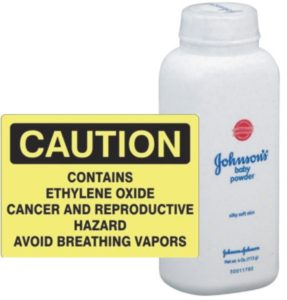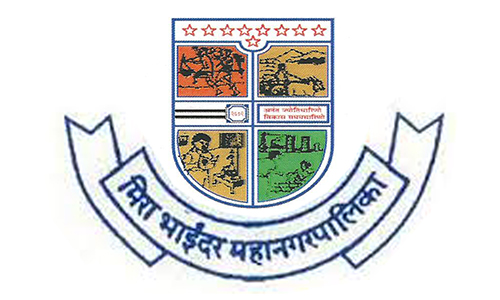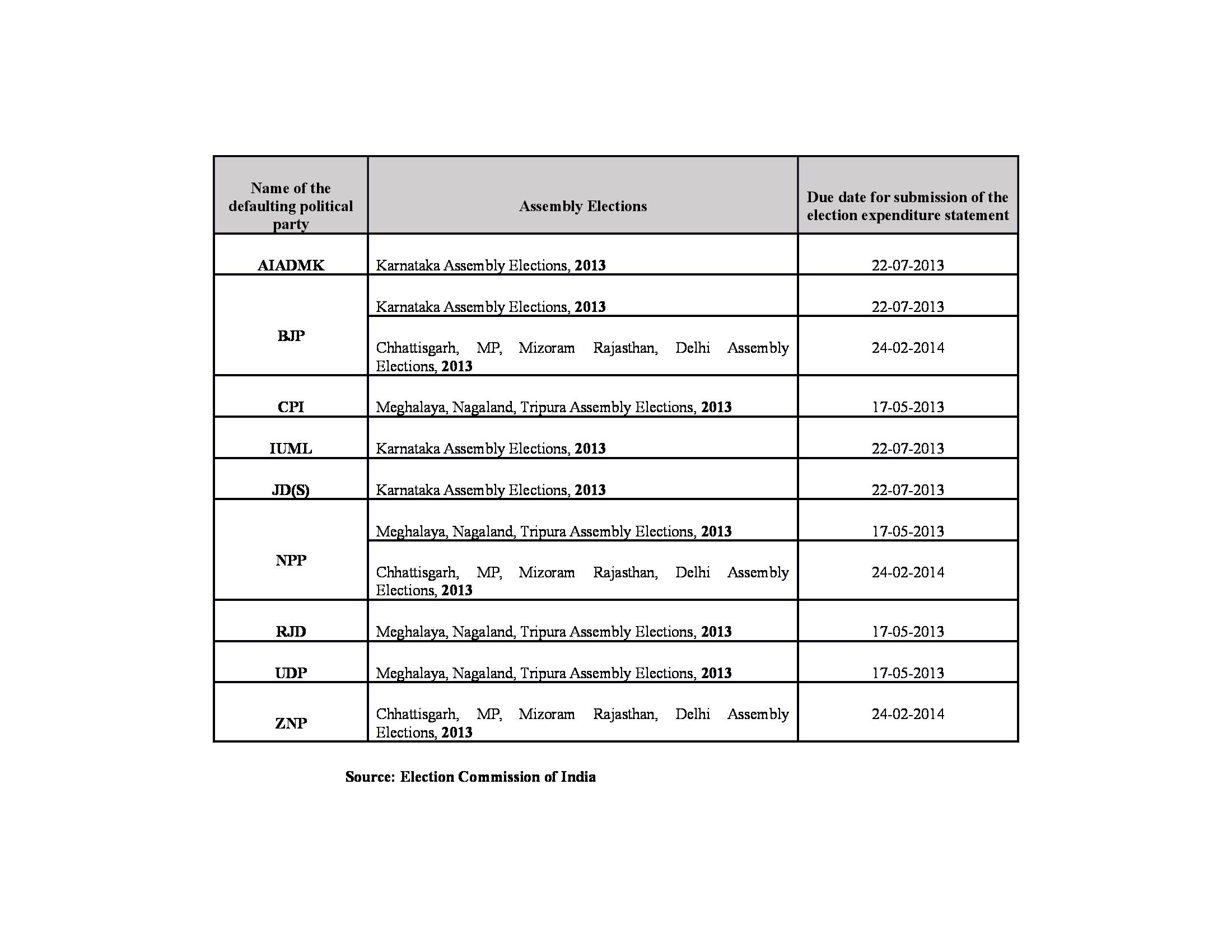 Bombay High Court is expected to give a judgement in WPL 1714 of 2013, possibly quashing or staying the cancellation of the licence of Johnson & Johnson for manufacturing cosmetics and Baby Powder at its Mulund Plant. On Monday, they will also give a hearing to whistleblower Dr Ajit Telang — formerly a scientist working for J&J – who has alleged in his Chamber Summons CHSWL/240/2013 that Johnson has blatantly lied and misled the court.
Bombay High Court is expected to give a judgement in WPL 1714 of 2013, possibly quashing or staying the cancellation of the licence of Johnson & Johnson for manufacturing cosmetics and Baby Powder at its Mulund Plant. On Monday, they will also give a hearing to whistleblower Dr Ajit Telang — formerly a scientist working for J&J – who has alleged in his Chamber Summons CHSWL/240/2013 that Johnson has blatantly lied and misled the court.
Brief outline of the case:
- Dr. Ajit Telang was a Technical Services Officer, who helped to develop many products and received four global awards between 1996 and 2003, and the Asia Pacific Award in 2005 for Neutrogena Mask design. He came to hold nine international patents/patent applications during his tenure with Johnson & Johnson. In 2006, Dr Telang worked on a project for elimination of sterilization processes with Ethylene Oxide (commonly called ETO or EO) for Band-Aid range of products, and became well-versed with its harmful effects.
- Around December 2008, he came across information that 15 batches (about 1.61 lakh containers) of Johnson Baby powder had been recently sterilized using ETO, which was not as per the procedure allowed by Maharashtra Food and Drugs Administration (FDA). He brought it to the knowledge of his immediate superior, and asked him to recall these batches. Later, he filed an online complaint on the website of the headquarters of Johnson & Johnson USA. Still, the 15 batches were not recalled.
- On 15th October 2010, Dr Ajit Telang was sacked without any prior notice.
- In February 2011, Dr Telang approached the FDA and made a full disclosure, and followed it up for the next two years, until FDA conducted its own investigation in March 2013, and finally cancelled the manufacturing license of the Mulund Plant on 29th June 2013. FDA’s investigation report was procured under Right to Information by Dr Telang: http://tinyurl.com/FDA-Report-
on-J-J-Baby-Powder
- Page 8 of FDA’s report says: “The unfortunate babies who were repeatedly exposed to the talcum powder of these Ethylene Oxide treated batches, which was highly advertised and claimed as ‘mild and clinically proven’ product (actually this claim was developed for baby talcum powder in which steam sterilization was used) may develop slowly and silently disease of cancer… there are sometimes years between exposure to a carcinogen and development of cancer. Further, some of these victims may pass on the genetic mutations to next generations if they live longer.”
- Johnson approached the State Health Minister Manohar Naik, to have the FDA order overturned and have their license restored. However, Dr Telang came to know about this, and personally deposed before the minister and impressed on him the gravity of the crime committed by the multinational. As a result, the FDA order was upheld by the minister.
- After this, Dr Telang became aware from news reports that Johnson had approached Bombay High Court to have the FDA order overturned. He believed that FDA, being aware of the matter, would adequately defend the case. However, in August, he learned from news reports that Johnson had misled the court as to the criminal nature of its offense, and misrepresented the matter before Bombay High Court. For reasons best known to itself and its lawyers, Maharashtra FDA was keeping quiet, instead of drawing attention to the many lies that Johnson was relying on in its petition.
- The implications of Johnson’s lapses for the lives of an estimated 1,61,000 infants (and their mothers) exposed to the baby powder with ETO residues are grim. Based on risk-assessment statistics, it may be conservatively inferred that as of date, more than 16 adult persons would actually have contracted cancer as a result of Johnson’s act of negligence. (Babies who are 100 times more sensitive to carcinogen may have contracted cancer in numbers significantly larger!) This makes it an act of culpable homicide in the eyes of law, and is a ground for not only cancellation of license, but further of imprisonment of all those who were responsible for this act.
- Internationally acceptable toxicity models suggest that several infants and children exposed to suspected residual levels of ethylene oxide stand a positive life-time risk of contracting cancerous tumours. How many have actually contracted is difficult to speculate unless tested. Out of those who have contracted malignant tumours, survival depends upon early detection and treatment. Hence, the first priority of FDA should be to highlight the risk to Indian parents through public notice and focus on: (a) Mass-screening of children suspected to have been exposed to residual levels of ethylene oxide (b) Treatment of children tested positive for malignant tumourous growth. As is well known, every day’s delay in detection and treatment will lead to more fatalities. Hence, litigation will need to be urgently separated from relief activities which needs to be immediately initiated by the ministry of health and family welfare on a national scale.
- Standard risk-assessment statistical analysis would indicate that many more deaths due to cancer, and also genetic mutations, are inevitable in the years and decades to come. However, any connections drawn between actual deaths, mutations etc. to this incident would be at best probabilistic.
One Dozen Lies in Johnson’s High Court Petition:
- To give a clean chit to Johnson, PCP Lab in Thane has assumed that the Permissible Exposure Level (PEL) for babies is the same as for adults i.e. 1 ppm. The tests conducted by Johnson at PCP Lab have shown that residual ETO of 1 ppm was “not detected”. Baby skin being three times thinner than the adult skin, easily allows penetration toxic materials and babies are vulnerable to very low quantities of toxic materials. It is globally accepted that human babies are 100 times more sensitive to a carcinogen than human adults, and therefore, the PEL for babies should be 0.01 ppm as against 1 ppm for adults.
- Residual ETO levels of, say, 0.9 ppm may very well be present in that same sample, in which 1 ppm was “not detected”. In other words, the test parameters are faulty.
- PCP Lab did not draw the test samples. They were supplied by Johnson, and hence again the test results are not reliable and are unacceptable by any court of law. (To be acceptable, an authorized person from PCP lab person should have independently collected the samples from the market and brought to the lab in a sealed envelope.)
- Johnson conducted the test to determine residual ETO at PCP lab about 17 months after the product was released to market. This is not acceptable as per ISO standards.
- PCP is a non-FDA approved lab, did not have validated method to conduct this test, container without a ‘validated test’ before it was used to test J&J’s baby powder.
- In its petition, Johnson has relied on a report by Gary Mitchel, who, while being a world-renowned expert, is an employee of Johnson & Johnson, USA. In order to give his company a clean chit, Gary Mitchel has referred to residual ETO in Shower-to-Shower powder and ear buds to arrive at the detection limit of 0.1 ppm for residual carcinogenic ETO. As these products are for adults and not for babies, these references are irrelevant and misleading. Secondly if 0.1 ppm was used as detection limit for adult products why it was not used for baby powder test mentioned above.
- Another set of “simulation tests” done at Bee Pharmo, submitted as evidence by Johnson, were also done with 1 ppm as ETO standard. J&J’s carcinogenic baby powder samples tested at this lab were from Simulation test done at Microtrol’s sterilization facility at Gurgaon, Haryana, which is an advanced facility certified by regulatory agencies as per the Microtrol website. However, the original ETO sterilization of the 1.51 lakh boxes of baby powder were carried out at the Microtrol unit at Sakinaka , Mumbai, which is a very old non-certified facility of Microtrol built in 1983. The decision of Johnson to carry out a “simulation test “at a sophisticated facility in Haryana is dubious.
- Further, the simulation test itself is dubious, as the simulation protocol was not shared with FDA in advance, before conducting the test. The simulation test was not approved by FDA in advance. As per proper protocol, a representative from FDA should have been present during the “simulation test” at Gurgaon to see that the test is done by J&J as per approved protocol. This was not done. An FDA person should have drawn the test samples of Baby Powder containers from the sterilizer and should have sent those samples for testing at Bee Pharmo laboratory in a sealed envelope. This also was not done. The results submitted by J&J themselves, in the absence of monitoring by any third party during the trial and drawing of samples, cannot be acceptable to any court of law.
- Bringing down the residual values of ETO is notoriously difficult and time consuming. Scientific research has shown that aeration time of as many as 17 hours may be needed to get bring residuals of a “medical device” below 1 ppm after ETO sterilization. Even after 96 hours of aeration, some researchers found that polythene samples had 40 ppm of residual ETO in them.
- American college of chest physicians opines that the aeration time to reduce residual carcinogenic ETO from a very low weight 5g talc pouch took 24 hours of aeration time. A 100 gram container of baby powder (which is much denser than 5g talc) may take 20 days to several months for residual carcinogenic ETO to be extracted. And yet, Johnson had used only 30 minutes of aeration time. Experts can state with absolute certainty that if the simulation test at Gurgaon, Haryana is carried out with aeration time of 30 minutes, there is no possibility of removing the residual ETO from 100 g baby powder container.
- Johnson has heavily relied on a self-serving and patently unscientific report by Gary Mitchel of J&J USA. This report has been written without a single actual test result done as per ISO 10993-7 (2008). J&J has made up a full report by making only theoretical assumptions and mathematical calculations, which USFDA would never accept. Mr Mitchel has computed quantity of ETO concentration in the container as 145 mg/ litre when the Batch record sheet of Microtrol shows it as 750 mg/ litre and hence the calculation has used 750/145 mg/litre = 5.17 times less quantity. And as if this were not enough, Mr Michel has relied on an outdated ISO tolerable limit of daily exposure of 20 mg of ETO residue in 1995, instead of the more stringent limit of 4 mg imposed in 2008. However, even this is only applicable for adults, and not for babies, who are their target customers. For babies as per ISO standard, the Tolerable Exposure Limit is computed as 0.2 mg, which can be rounded off to 0 mg. Gary Mitchel who is the member of ISO standards for sterilization has not mentioned this value anywhere. This is a criminal act of omission.
Johnson has thus tried to deliberately confuse the court by using contradicting information as per their convenience, says Dr Ajit Telang in his petition to the court. “Gary is aware of these facts since he is employed in J&J Medical division. Hence, the cover up act by Gary Mitchel is a criminal act,” says Dr Telang.
Will the hon’ble Bombay High Court will take these facts into account ? Or will they simply ignore this petition? We must wait and see.
Health hazard warning Toxic Johnson & Johnson’s Baby Powder




